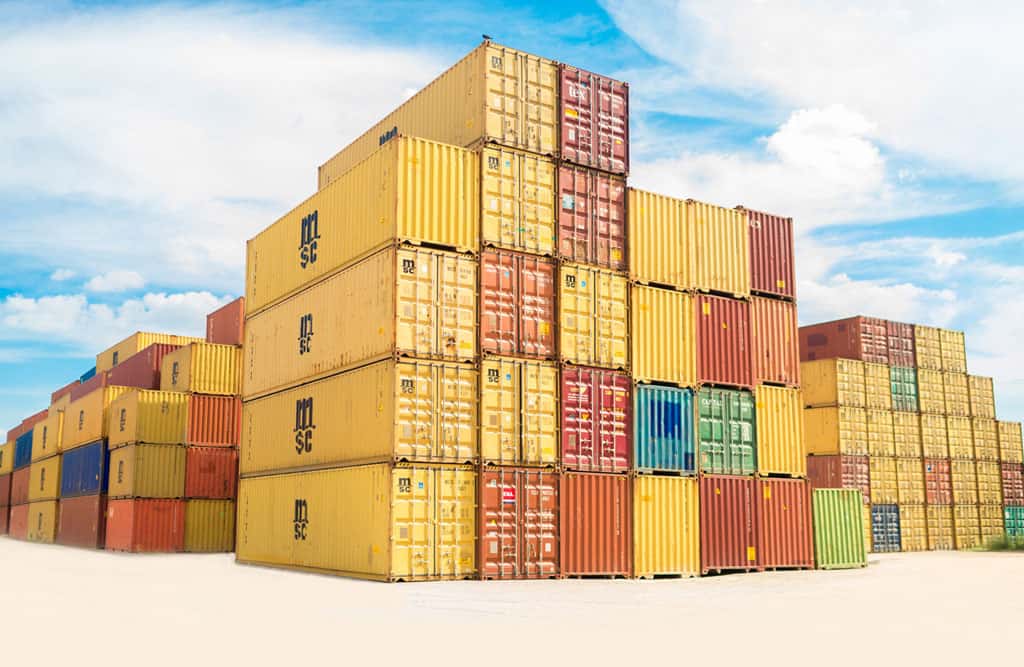Best Shipping Practices for Resellers

Using the right shipping practices company when you’re ordering inventory is crucial to your business’ success. You can’t get the product into the hands of your customers until that product gets to you. Choosing the wrong option when you’re restocking can seriously hurt your business — late shipments leave your customers waiting on the product, which can tank your reputation. Not to mention that lost packages can kill your business, especially if you’re using a shipping company that makes it difficult or even impossible to track down missing shipments.
When inventory is running low, you need to restock quickly and reliably while maximizing profit, and picking the right shipping option is one part of the equation. It is important to note that not every supplier will offer all of the options you are looking for, so you should ask before working with a supplier. The good news is that most suppliers will allow you to use your account for shipping, and larger suppliers have relationships with all of the major carriers.
Regardless, it is important to be informed. In this article, we explain how to ship products domestically and internationally at the best rates and with the most reliable carriers. With this information, you can pick the best options that are presented to you by any supplier.
The Best Options for Domestic Shipping and International Shipping
Wholesalers and retailers that are replenishing their inventories have different needs when it comes to domestic shipping and international shipping. Some are looking for the cheapest way to ship. Others need to find the best way to ship internationally. Every company will have their own experiences with specific shippers, but we have discussed the various options at length with our customers and have found that there are some commonalities.
Your options for domestic shipping are DHL, FedEx, UPS, and USPS. Very few wholesalers and retailers buying stock will choose USPS because even though it is sometimes the cheapest shipping option, it tends to be unreliable and slow. Most use FedEx or UPS even when they’re not the cheapest way to ship because they are much more reliable. For ground service, UPS is the better and more reliable option of the two. Many people are unaware that FedEx Ground is a different operating company than FedEx Express, and that only FedEx Express offers “day-definite” delivery. Very few use DHL in the US because of pricing.
Some wholesalers ordering larger shipments of inventory use freight companies like ABL and XPO. Using a 3PL like ABL or XPO is the safest option when shipping larger quantities of inventory either domestically or abroad. If you use a reputable 3PL and something does go wrong with your order, you’ll receive better customer service and likely find or at least get answers about your package within minutes. It can be less expensive to ship with a freight company if you are shipping skids, but this varies by point of origin and destination. For the most part, the added security of using a freight company comes at a cost. For smaller packages, some international companies use DHL because they sometimes offer the cheapest international shipping.
Calculating Shipping Costs
Every shipment is different, and every shipper calculates shipping rates differently. In general, however, these are the factors that come into play when shippers are determining rates:
Package size and weight — A smaller, heavier package may cost less to ship because it’s taking up less space, while a larger, lightweight package can cost more.
Destination — Sending a package to an international destination will usually require more effort on the part of the shipper, and therefore cost more. You can optimize by using different companies for international and domestic shipping.
Speed — The faster a package needs to get where it’s going, the more expensive it will be to ship.
Cost shouldn’t be your only concern. The cheapest shipping option won’t always be the best one. Reputation and reliability are hugely important factors to consider when choosing a shipping carrier.
FOB Origin vs. Destination
It is standard in the used phone industry for the customer ordering inventory to coordinate shipping and also to bear the cost of shipping. Buyers often use their own accounts when setting up a shipment, and so it’s important that you understand what FOB Origin means and how it differs from FOB destination. FOB stands for ‘free on board’. It’s a shipping term describing who is responsible for paying for transport and liable for damage to goods while in transit.
When an order is FOB Origin (which is most common), goods belong to the buyer as soon as they leave the seller’s hands. The buyer is responsible for arranging and paying for shipping and for filing a claim if anything should happen to the goods in transit. When an order is FOB destination (less common), the seller is responsible for arranging and paying for transportation and liable for any damage while the goods are en route to the buyer.
As the buyer, you are nearly always liable if the inventory you’ve ordered doesn’t arrive — whether you’ve scheduled a shipment yourself or you’re using a shipping option your supplier has provided. If you do not want to take any risk of your package getting lost, damaged, or stolen, it’s a good idea to purchase insurance.
The Best International and Domestic Shipping Options
The best domestic shipping and international shipping options will depend on how much inventory you’re ordering, how fast you need it to arrive, the size of the shipment you’re expecting, and how much risk you are willing to bear. These are the best and cheapest shipment options sorted by priority:
Cheapest shipping — UPS Ground is often the absolute cheapest way to ship when delivery times aren’t a factor. You can still get day-definite delivery.
Fastest domestic shipping — UPS and FedEx are the fastest and most reliable options. Which is fastest depends largely on the lanes the package will travel.
Cheapest international shipping — USPS is often the cheapest way to ship internationally, but it’s not the best way to ship internationally. Use with caution and always buy insurance.
Fastest and cheapest international shipping — DHL is your best bet unless you’re shipping a large volume of goods, in which case you should look into freight companies.
Safest international shipping — Choose a freight company like ABL and XPO.
The bottom line is that you absolutely have to make sure that the inventory you need arrives quickly and reliably so you can service your customers, some of whom may already be waiting for the product to arrive. shipment hassles are common in the world of retail, but the right solutions aren’t hard to find. Even making small changes to your inbound shipment strategy can net big returns in the form of lowered costs and customer loyalty.









